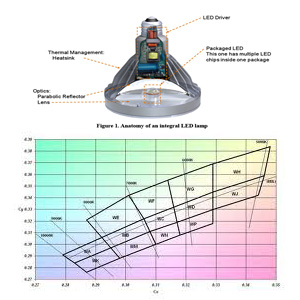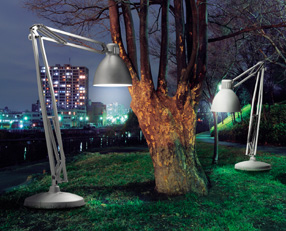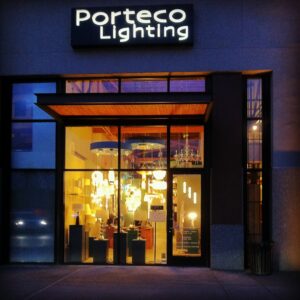 We hear the term LED a great deal lately…so, what is LED anyway?
We hear the term LED a great deal lately…so, what is LED anyway?
An LED is a light-emitting diode ~ a small solid-state semi-conductor chip, encapsulated in a silicon epoxy, which emits light when partnered with an electrical current.
LEDs were first introduced in the 1960s in red, yellow and green; they were used mainly in appliances and digital clock displays. Once scientists developed the blue LED in 1994, they had the three primary colors and they could produce a white LED; which is what we use in lighting today.
Unlike incandescent lamps, referred to as a “hot wire in a bottle” – a filament surrounded by inert gas heated to incandescence by an electric current, LED lamps are a bit more complicated. LED lamps consist of a LED driver (regulates the power to the diode), a heat sink (dissipates heat from the driver), the LED array (multiple diodes), the lamp base and the lamp optics.
When comparing LED lamps, why is there such a difference in price?
Without getting too far into the science… the quick answer is binning. A silicon crystal is grown and sliced into extremely thin wafers. Each wafer is divided into 100,000 chips, this is referred to as the “bin” (see example). Manufacturers will select chips from the bin to create their LED array.
Their selection processes is of course proprietary information, but imagine that the best quality chips are located in the center of the wafer and the lower quality chips are towards the edges. This selection process translates into cost; the center chips are more expensive than the edges. The best quality LEDs are selected from the same wafer whereas lower quality products may incorporate chips from different wafers causing the LED to have an inconsistent or off-color.
Be sure that you are buying the best quality LEDs by looking for the “Lighting Facts” label. The Lighting Facts label was developed by the Department of Energy (DOE) to assure the consumer that they are buying quality LED products. Manufacturers have to submit their products for testing in order to use the label on their products. You will want to buy the highest lumens per watt and be sure to buy good color LEDs. Check the Kelvin temperature of the lamp, most people prefer LED in the 3000K range.
Complete List
 Outdoor Living IV Posted on July 13th, 2020
Outdoor Living IV Posted on July 13th, 2020
 Outdoor Living III Posted on May 29th, 2020
Outdoor Living III Posted on May 29th, 2020
 Some Light Gardening! Posted on April 29th, 2020
Some Light Gardening! Posted on April 29th, 2020
 Back By Popular Demand Posted on March 25th, 2020
Back By Popular Demand Posted on March 25th, 2020
 New website and a New Look Posted on September 20th, 2019
New website and a New Look Posted on September 20th, 2019
Categories
 New (number of posts: 3)
New (number of posts: 3) Tips (number of posts: 41)
Tips (number of posts: 41) Uncategorized (number of posts: 10)
Uncategorized (number of posts: 10)